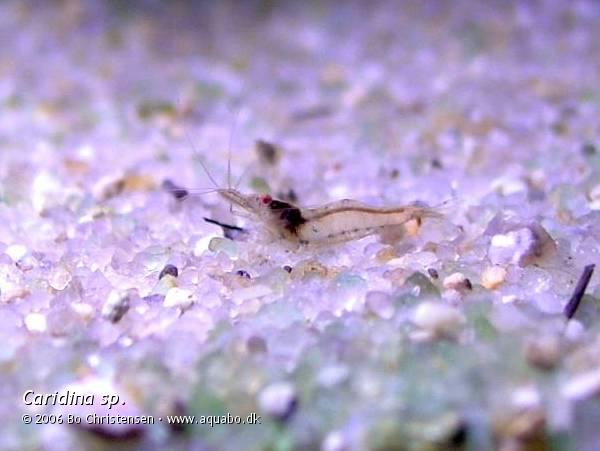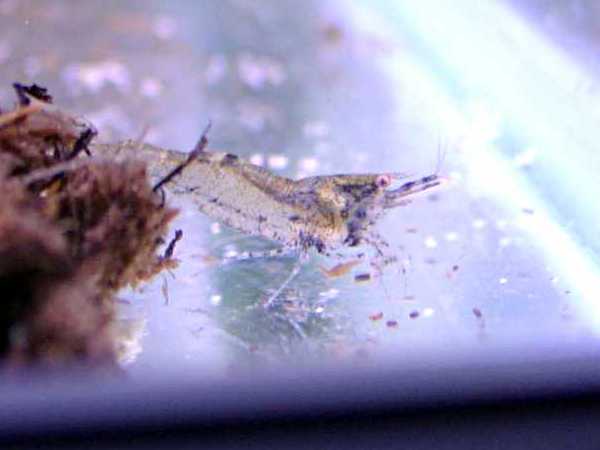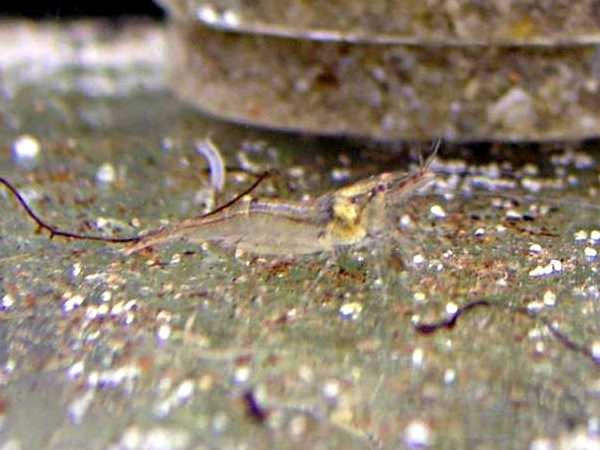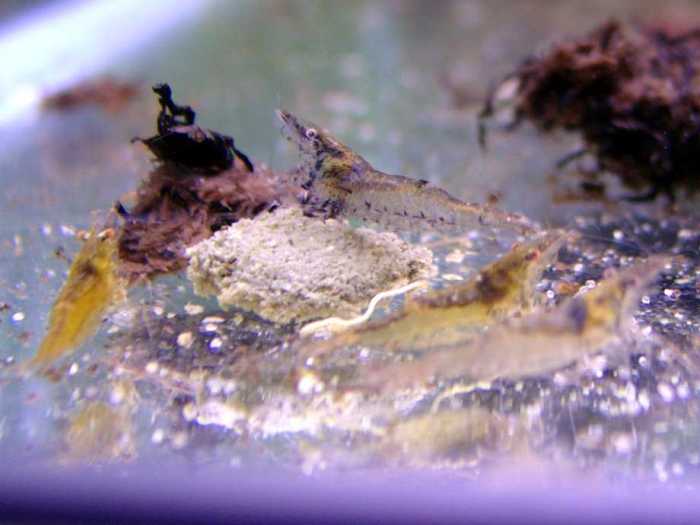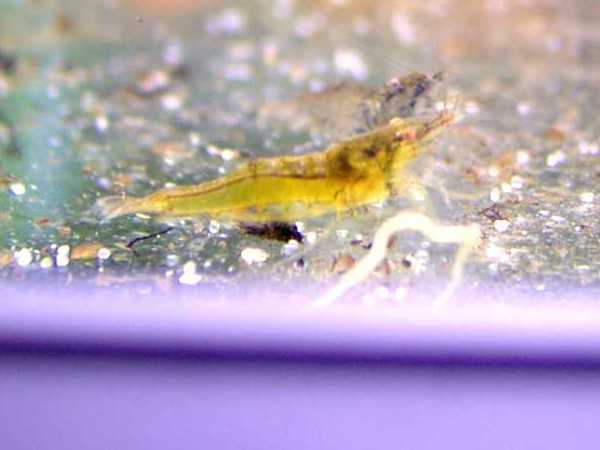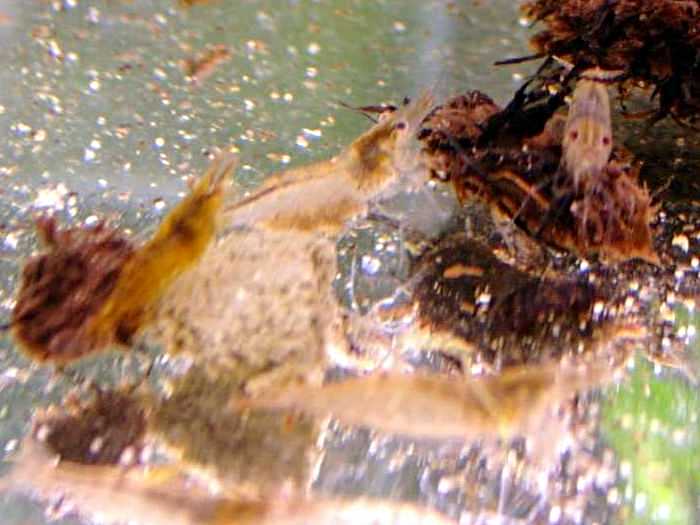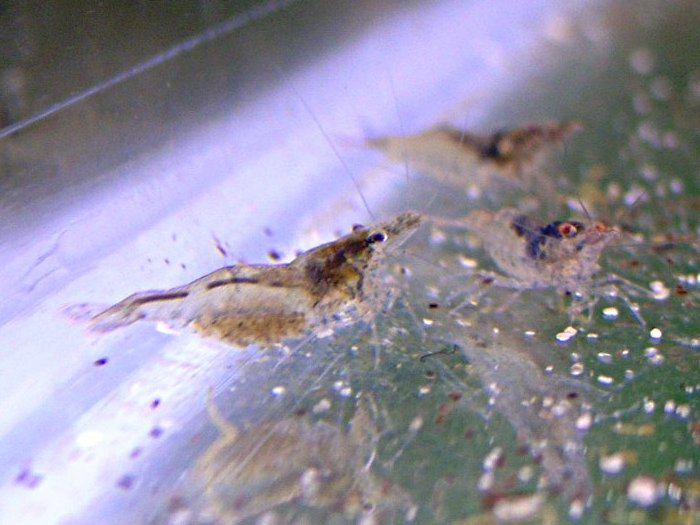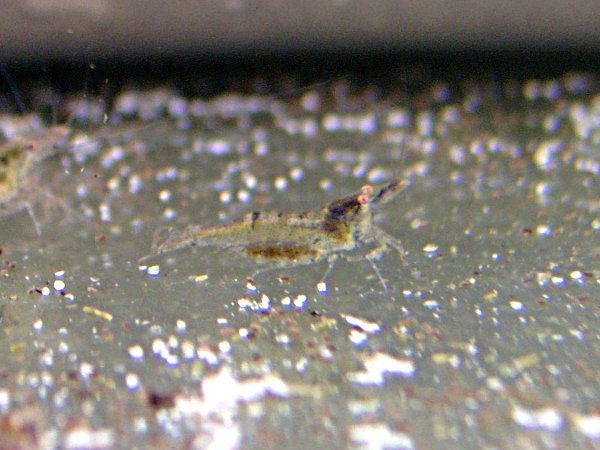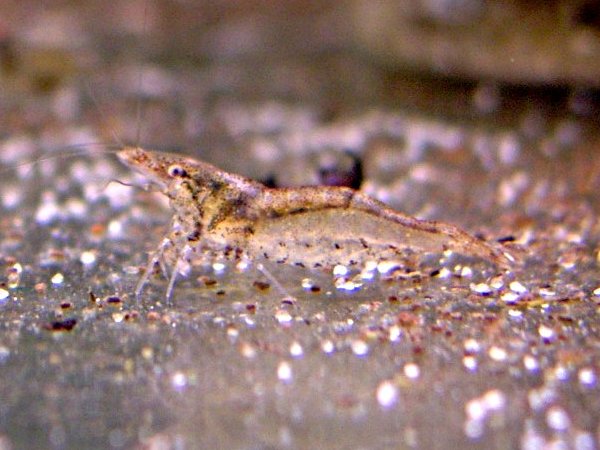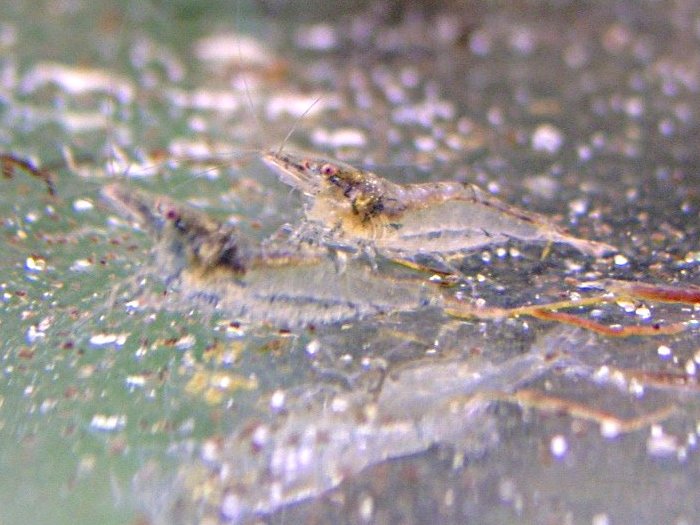Just a little update.
Hope that someone might have some new info on these shrimp.
Only 1-3 shrimps from each hatch survive.
And i have discoved something funny. These shrimps are very shy.
They don't seem happy out in the open, like other shrimps do. They usually move alongside stones og wood. When I move to their tank, they hide under leaves or stones or move back in the tank. None of my other shrimps do that.
Here's some new photos.
A close up.
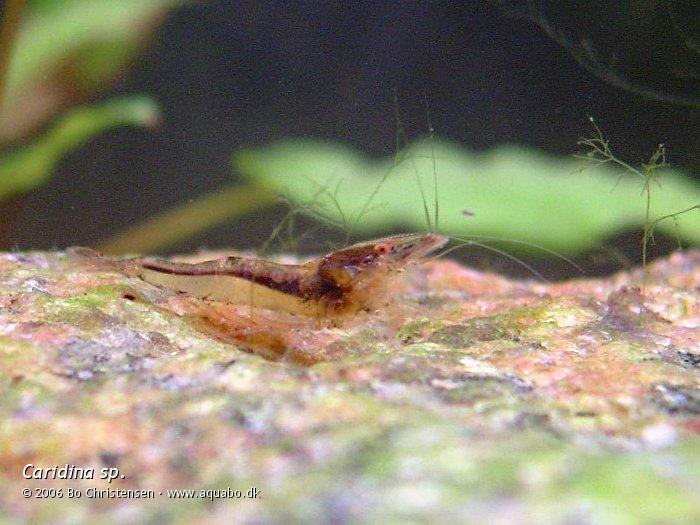
This one shows the different colors they have. The yellow one is allways yellow, the other ones shift in colors from transparent to brownis.
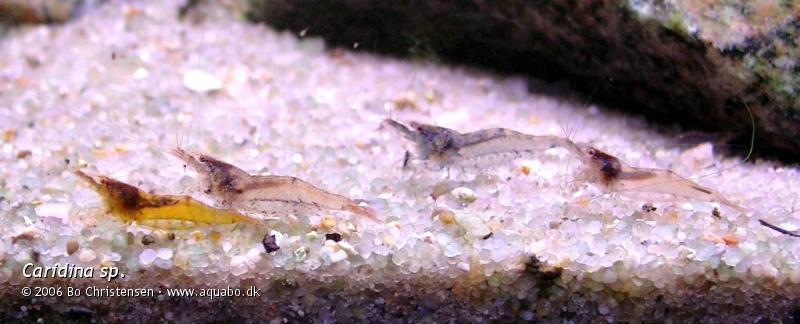
The yellow female carrying eggs. She have had eggs several times. None of the offspring has shown this yellow coloration.
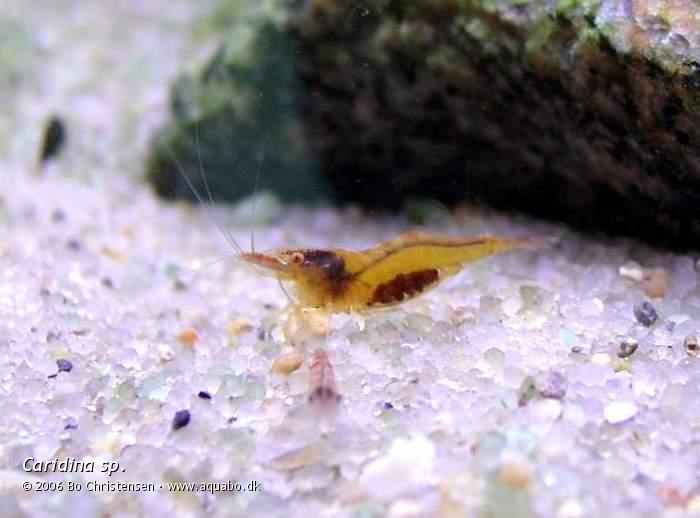
Another female carrying eggs.
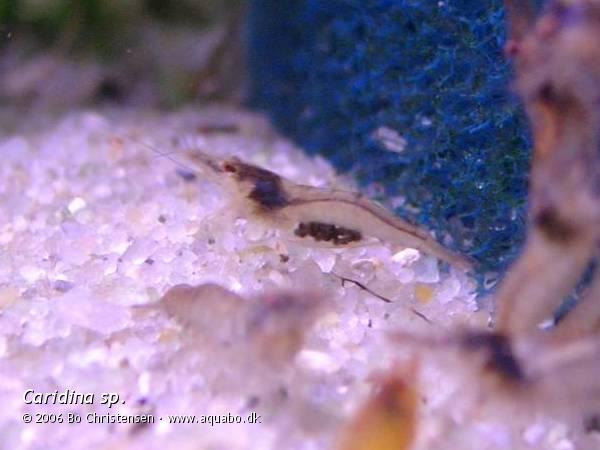
Shrimplet 6-7 mm. long.
